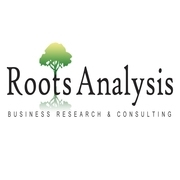
Human factors engineering and usability testing have now become an essential part of product design across almost all industries, offering developers the chance to optimize proprietary products in alignment to the preferences of consumers
London
Roots Analysis has announced the addition of “Human Factors Engineering and Usability Testing Services Market for Medical Devices, 2020-2030” report to its list of offerings.
Given the growing regulatory stringency, there are a number of medical devices recalls reported each year. Moreover, as such solutions are gradually becoming increasingly complex, it is imperative to identify potential risks / hazards, in order to guarantee safety to end users post product launch. This has led many device developers to resort to human factors engineering and usability testing. However, the aforementioned processes require specialized resources and expertise. Therefore, outsourcing this aspect of product design and development, has become common among industry stakeholders.
To order this 200+ page report, which features 120+ figures and 100+ tables, please visit this – https://www.rootsanalysis.com/reports/human-factors-engineering-and-usability-testing-services.html
Key Market Insights
Around 105 companies / organizations claim to be engaged in offering human factors engineering and usability testing services for medical devices
It is worth noting that this market is currently dominated by the presence of small players (2 to 50 employees), which represent more than 67% of the players. Further, more than 50% of the firms engaged in providing human factors engineering and usability testing services were established post 2000.
Majority (57%) of the players engaged in this domain offer services for hospital / laboratory equipment and instruments
Various companies (53%) engaged in this domain claim to offer human factors engineering and usability testing services for diagnostic devices, followed by those providing support for drug delivery devices (44%), home use medical devices (36%), clinical use devices (26%) and therapeutic devices (25%).
More than 90% companies provide design and development services for medical devices
Currently, over 80 players provide services for prototype design and development, while almost 70 firms offer services for interface development. In addition, 83% service providers offer verification and validation services; of these 65% players provide services for both formative testing and summative testing.
Implementation of human factors engineering and usability testing, at initial stages of device design and development, has been demonstrated to enable significant cost savings
We believe that, by 2030, an increase in adoption (up to 41%) of human factors engineering and usability testing services for medical devices is likely to be observed, resulting in savings worth USD 1.4 billion. Incorporation of such novel approaches is also anticipated to help developers in achieving high return on investments, in the range between 5:1 to 9:1.
By 2030, the market is anticipated to be worth close to USD 1 billion, growing at an annualized rate of 14.2%.
Based on the revenues generated from different services for usability testing, currently, the maximum share is expected to be generated through evaluative testing methodologies (61%), followed by generative testing methodologies (39%).
To request a sample copy / brochure of this report, please visit this – https://www.rootsanalysis.com/reports/human-factors-engineering-and-usability-testing-services/request-sample.html
Key Questions Answered
- Who are the leading players providing human factors engineering and usability testing services to medical device developers?
- What is the cost associated with different steps of the human factors engineering and usability testing process for medical devices?
- What kind of cost savings can be achieved through the adoption of the human factors engineering and usability testing approach for medical device development?
- In the past, how has the adoption of human factors engineering and usability testing approaches impacted medical device recall rates?
- How do the guidelines for human factors engineering and usability testing for medical devices, differ across key global regions?
- What are the prevalent and emerging trends within the human factors engineering and usability testing service providers market?
- How is the recent COVID-19 pandemic likely to impact human factors engineering and usability testing services market?
- How is the current and future opportunity likely to be distributed across key market segments.
The USD 1 Billion (by 2030) financial opportunity within the human factors engineering and usability testing service providers market has been analysed across the following segments:
- Type of tools used
- Generative tools
- Evaluative tools
Steps involved
- Contextual analysis
- Task analysis
- Design analysis
- Formative studies
- Use risk analysis
- Known use error analysis
- Summative studies
- Regulatory document preparation
Device class
- Class I
- Class II
- Class III
Key geographical regions
- North America
- Europe
- Asia Pacific
The research covers profiles of key players (mentioned below) that offer human factors engineering and usability testing services for medical devices; each profile features an overview of the company, details related to its human factors engineering and usability testing portfolio, recent developments and an informed future outlook.
- Agilis
- Human Factors Consulting Services
- Human Factors MD
- User wise
- Ximedica
- Austrian Center for Medical Innovation and Technology (ACIMT)
- Auxergo
- THAY Medical
- Ergotech
- Jonathan Bar-Or Industrial Design
For additional details, please visit
https://www.rootsanalysis.com/reports/human-factors-engineering-and-usability-testing-services.html or email sales@rootsanalysis.com
You may also be interested in the following titles:
- Global Handheld Ultrasound Imaging Devices Market, 2020-2030
- Non-Invasive Neurostimulation Devices Market, 2020-2030
- Medical Devices CROs Market (2nd Edition), 2020-2030
Contact Information:
Gaurav Chaudhary
gaurav.chaudhary@rootsanalysis.com
Roots Analysis
A430, 4th Floor,
Bestech Business Towers, Sector 66, Mohali, India
sales@rootsanalysis.com
+1 (415) 800 3415
+44 (122) 391 1091
Web: https://www.rootsanalysis.com/
LinkedIn: https://in.linkedin.com/company/roots-analysis
Twitter: https://twitter.com/RootsAnalysis
The post The human factors engineering and usability testing services market for medical devices is projected to reach USD 1 Billion by 2030, claims Roots Analysis appeared first on Financial Market Brief.

